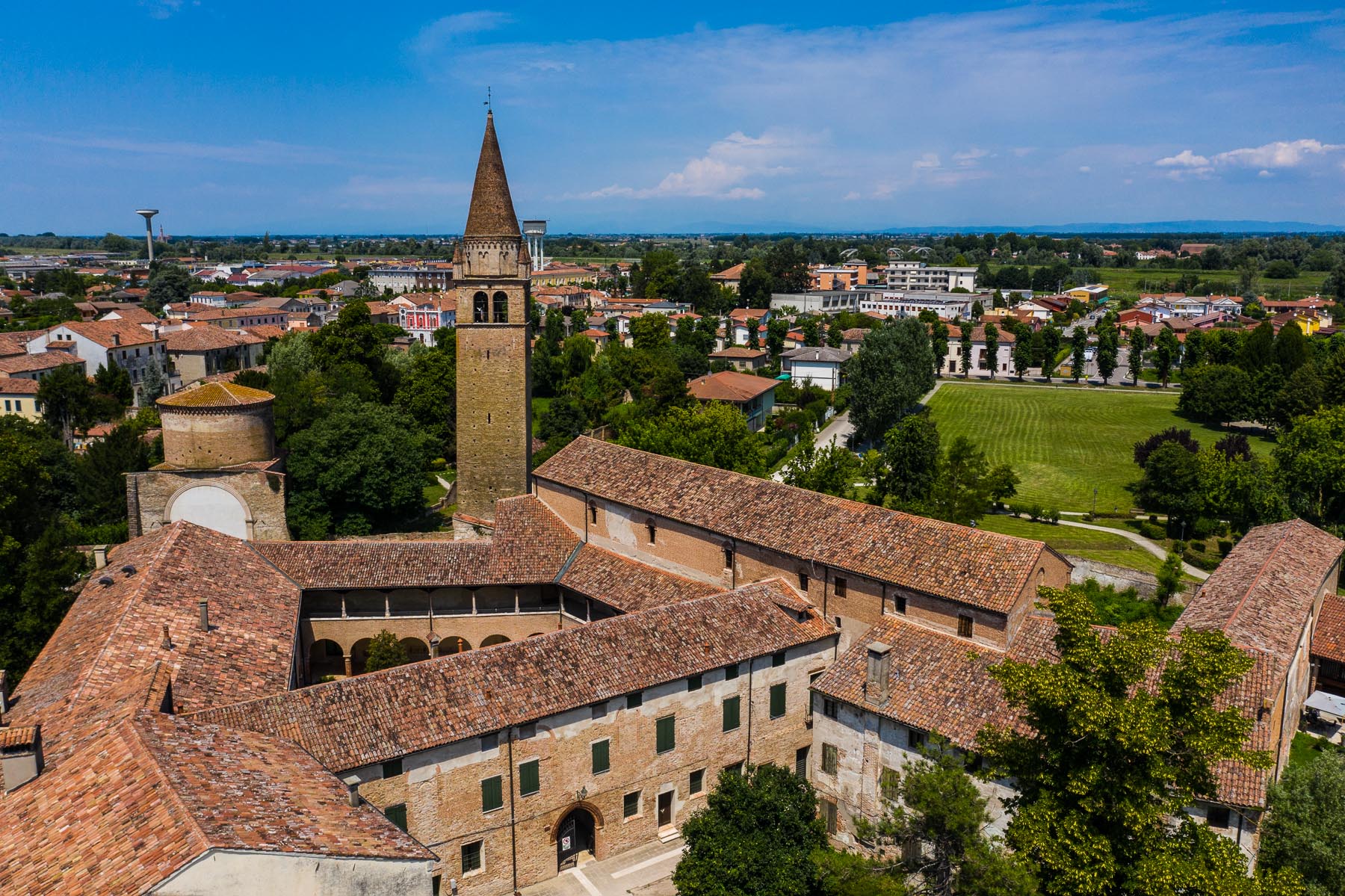
Badia Polesine
The origins of the town of Badia Polesine are closely linked to the Community of Benedictine monks, present here since the 10th century and connected to the presence of the Abbey of S. Maria della Vangadizza.
In 1200, they were succeeded by the Camaldolesi, who remained in the monastery until its suppression in 1810.
Today, the bell tower, the trapezoidal cloister from the 1300s and the side chapel from the 15th century dedicated to the Blessed Virgin of Vangadizza remain of the large monastic complex and immersed in a beautiful park.
In the opposite square, it is impossible not to notice two sarcophagi: they hold the remains of Alberto Azzo II d’Este and his wife Cunegonde, progenitors of the Hanover family, from which the current English rulers descend.
Walking under the arcades along the narrow streets of the historic center, you can see beautiful buildings that capture the eye for their architectural styles, such as Palazzo Turchetti or the Palazzo dell’ex Mercato Coperto.
It is not possible to leave Badia Polesine without a visit to the Balzan Theater built in 1812: a real jewel for the gold leaf decorations which recalls, by resemblance, the Fenice in Venice.
Finally, in the foyer of the same theater, not to be missed is the Balzan Collection, made up of 49 works created by famous Italian painters of the 19th and 20th centuries, including Giovanni Fattori and Giuseppe de Nittis.
The Nonantolana-Longobarda road starts from Badia Polesine, a stage of the Romea Strata, an ancient international road.